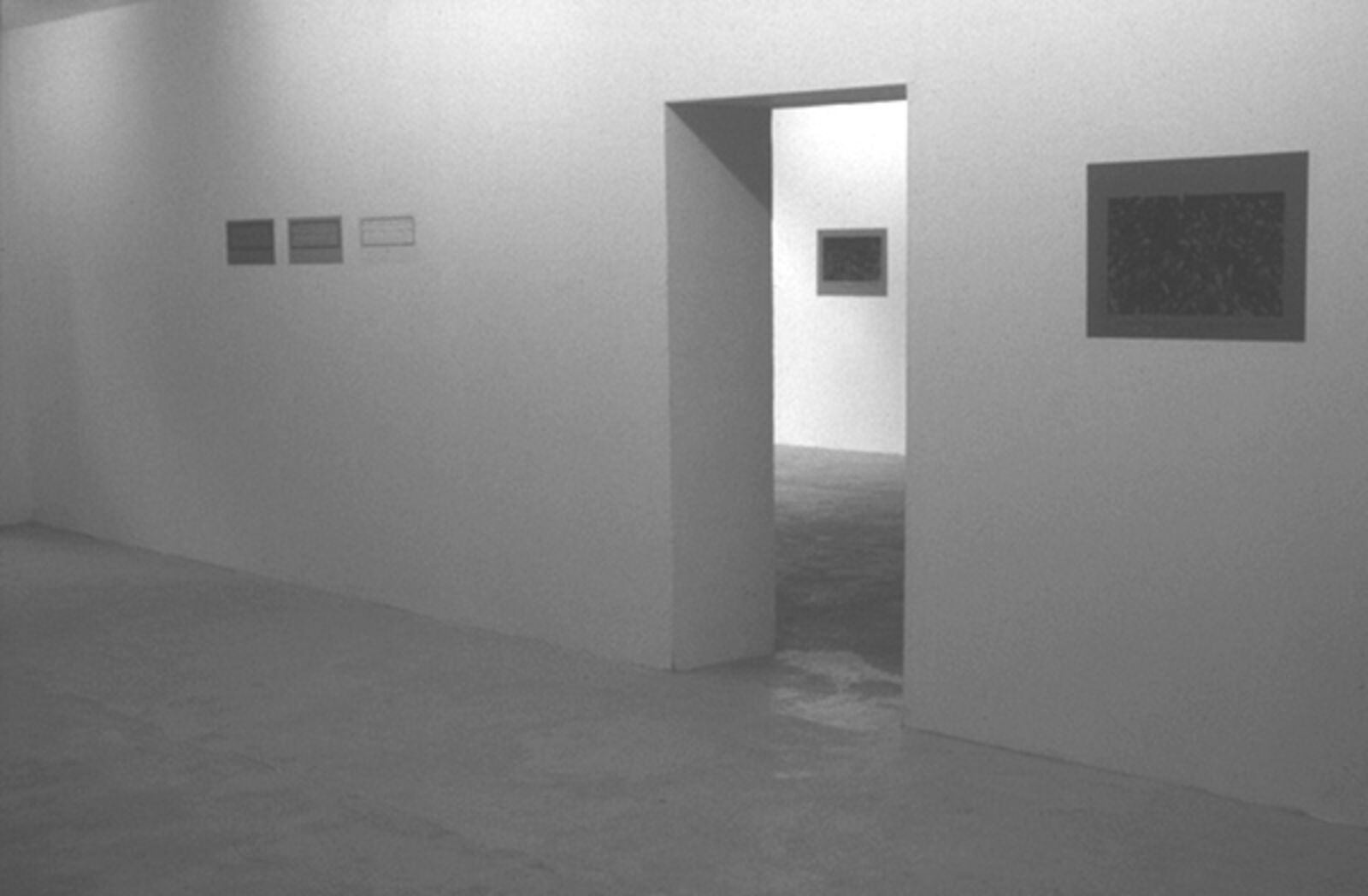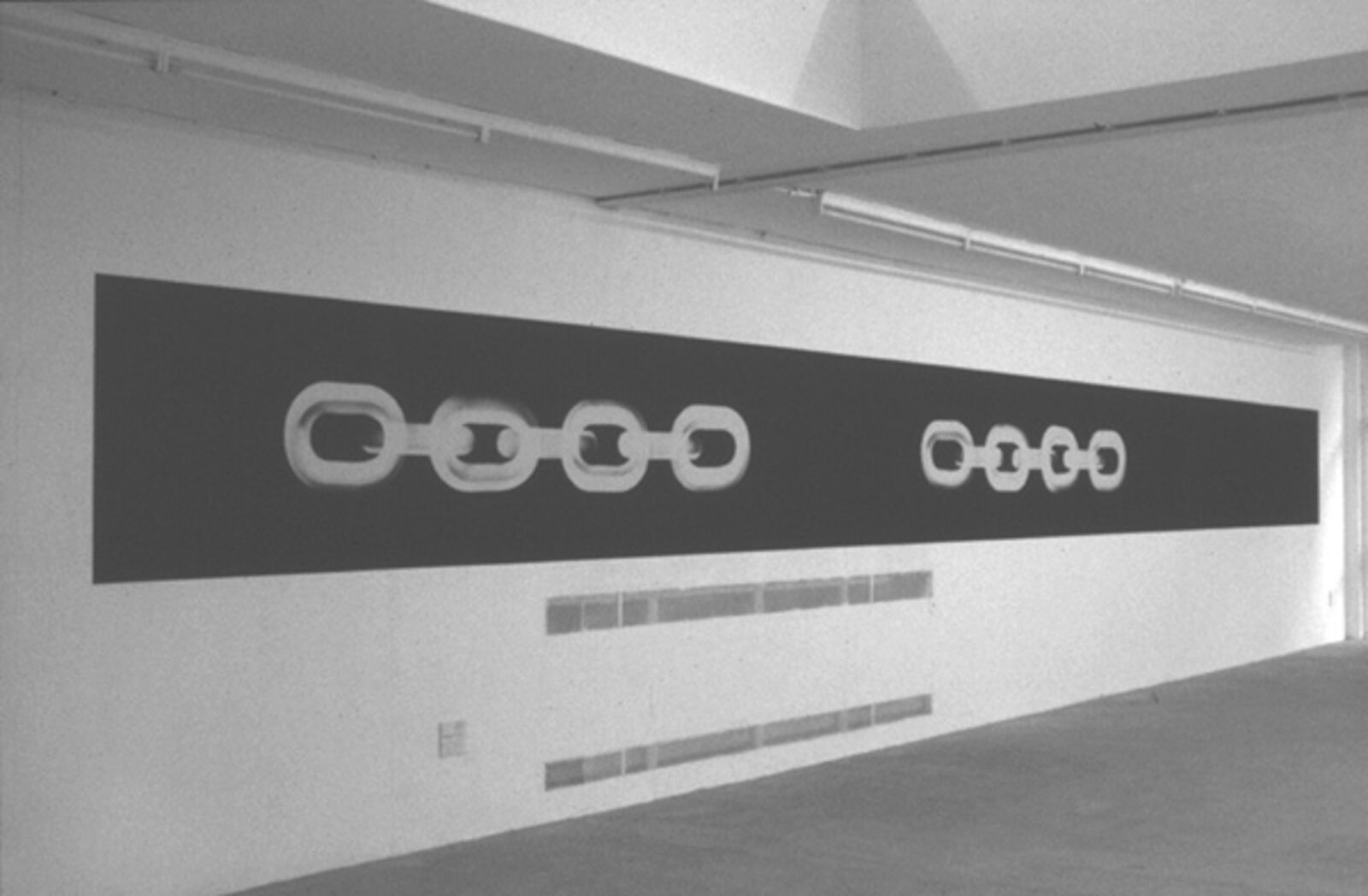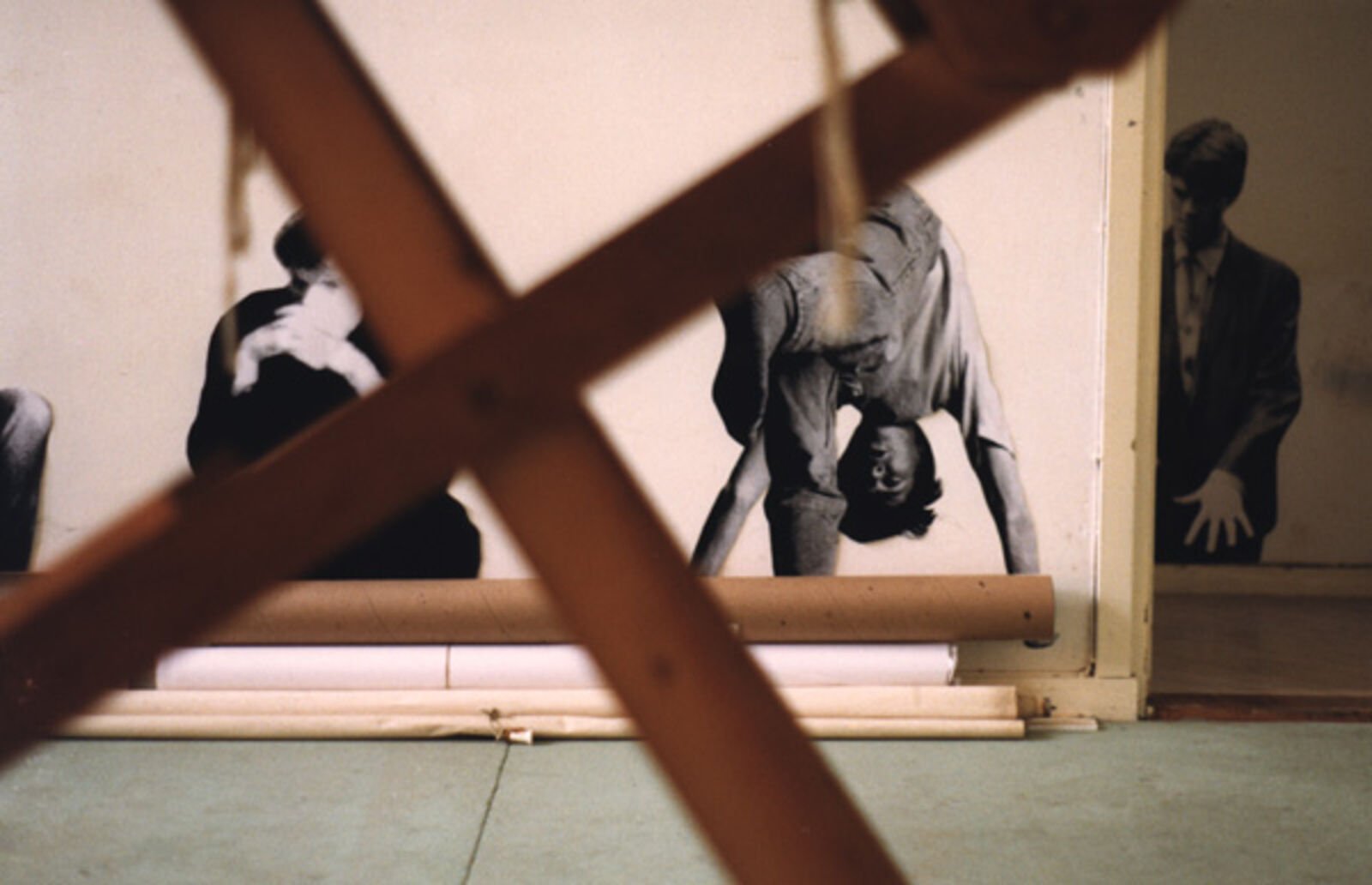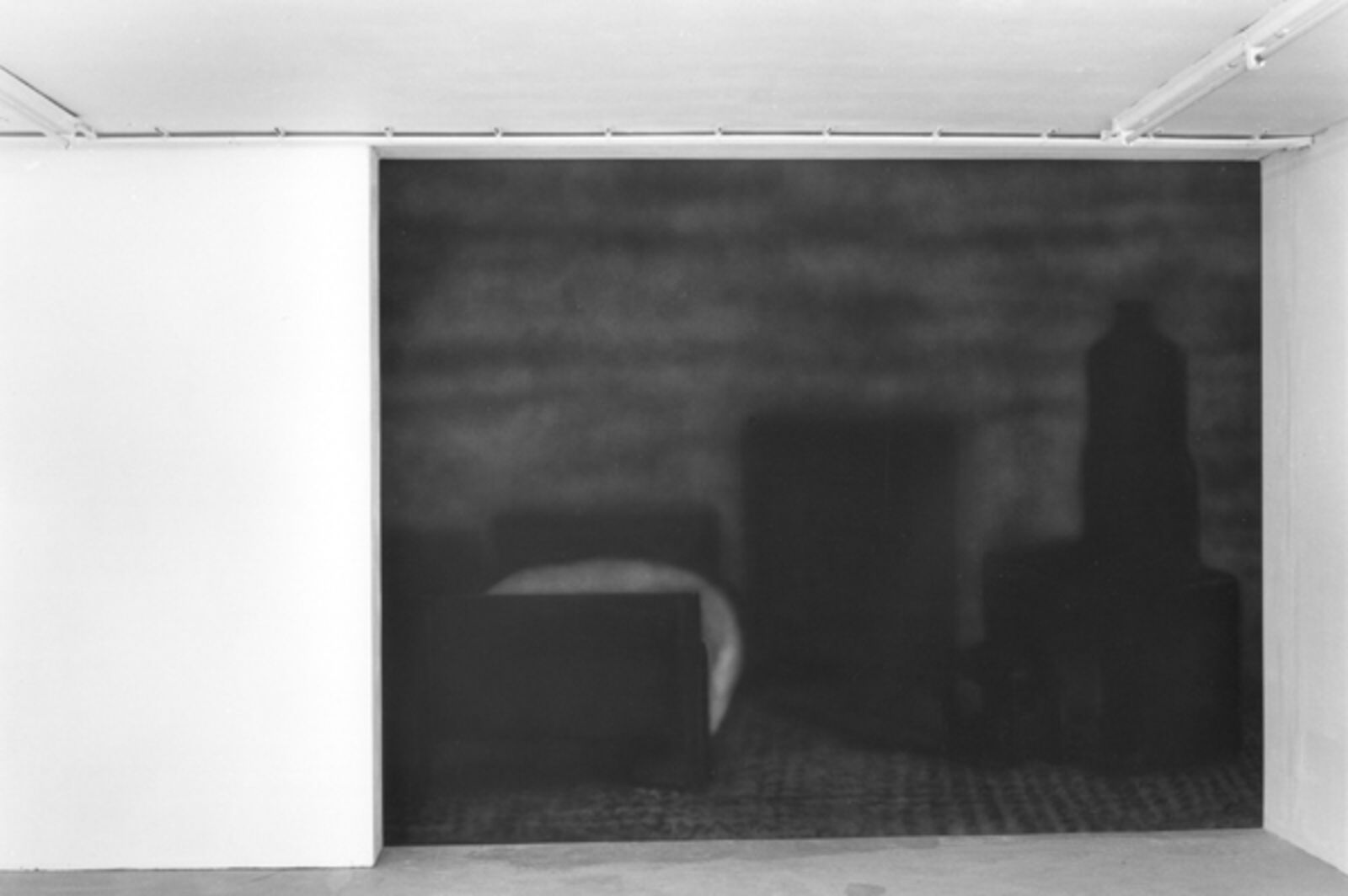Heel and toe
11.11–09.12.1989
de Appel, Prinseneiland 7, Amsterdam
de Appel, Prinseneiland 7, Amsterdam

Jouke Kleerebezem
© Maarten de Reus
© Maarten de Reus

Maarten de Reus, Untitled, 1989
© Maarten de Reus
© Maarten de Reus

Joke Robaard, Installation
© Maarten de Reus
© Maarten de Reus

Lon Robbé, Untitled
© Maarten de Reus
© Maarten de Reus
‘At the request of De Appel, Joke Robaard has put together an exhibition under the title Heel and Toe. Robaard accepted the invitation to display a 'climate' by asking Jouke Kleerebezem, Maarten de Reus and Lon Robbé to join her in responding to the space by working directly on (or in) the wall. Four artists, three of whom work with photographic images and one with text. Not a new group or trend, but four individuals operating from a related mentality. Four artists whose work leaves an impression not only literally on or in the wall, but above all on the experience of the spectator, heel and toe. All of them present their work in an almost casual way; the works are obvious and also inevitable because of the way they adhere. The subjective experience of the artists is clearly not the main issue for this is objectivised. The spectator is put into a personal relationship with the work, which demands from him an active attitude. The medium of photography is ambiguous: on the one hand its mechanical nature makes it seem objective, on the other hand there is nothing more personal than the family album snapshot. No other medium bears so deeply the presence of absence: every framing implies what is not photographed. A photograph that purports to be a representation of reality says less about reality than a photograph that consciously aims at reorganising reality, recreating our relations to each other or to things. One can deal with language in the same way, reordering words in order to produce a change in the image and value of language. The works of De Reus, Robaard, Robbé and Kleerebezem reveal universal experiences, providing the spectator with the opportunity to relate to realty in a new way.
Joke Robaard (1953) peels a photograph in the way that one peels an onion, layer by layer. Whatever is unnecessary and distracting, every meaningless reference or symbol, is thrown away. What remains is an essence, infused by Robaard with a new life. The photographs that Robaard has placed on the skirting-board in De Appel show people sitting, standing, lying, squatting and kneeling. It is as though they are being absorbed into the wall. The depiction is kept imprisoned in the flat surface, so that the photographs function not as a window onto another reality but as a wall that the viewer comes up against.
The photographs by Lon Robbé (1946) likewise deal with the desire to experience the authenticity of things, although she works differently than Robaard. While Robaard continues to make changes during the making of the photograph, moulding the photograph as if were, with Robbé this process occurs before the photograph is made. The photograph in De Appel of a bedroom interior, stretched between the ceiling and the floor on the wall, is so blurred that palpable forms become almost abstract. The tension between the flat surface and the space that is suggested behind it, the recognition of familiar objects and the denial of this resulting from the slipping scale of the furniture, constantly disorient the spectator. This insecure position enables the viewer to redefine his relation to things.
Maarten de Reus is not interested in the depiction of objects, but in their appearance: how do they present themselves to us, how do you create a void so that something can potentially exist? His images of objects looming out of a long strip of black paper incisively pose the issue of presence / absence, just as in his three-dimensional work. De Reus constructs his photo works, which he also refers to as ‘proposals’. The decision to make an object appear is always coupled to the decision to make something else that is also present not appear. The gap that is thus created endows the flat objects with a spatial quality that seems to extend beyond the third dimension.
Jouke Kleerebezem (1953) appropriates and collects words and images that serve not as a means towards an ordering. but as ordering itself. Kleerebezem feels that it is impossible to recall an essence pertaining to words and images, but he is interested in our desire for this. Is it possible to communicate in a simple and direct way by using words in a new arrangement and form, so that the spectator, just like the artist, is able to form his own opinion? Kleerebezem chooses each word very carefully: how do colour, size, typeface, sequence and placing influence the value of a word? How does a narrative arise from words and occasional images?
What links these four artists is the desire for a constant tension in the spaces inbetween - the gaps that can arise through the slipping of flatness into depth, from tangibility to abstraction, from word to image, from specific to universal situations, from subject to object, from memory to the ‘here and now’ and to the future.’ (‘Heel and Toe’, Newsletter De Appel, 4 (1989) 6.)